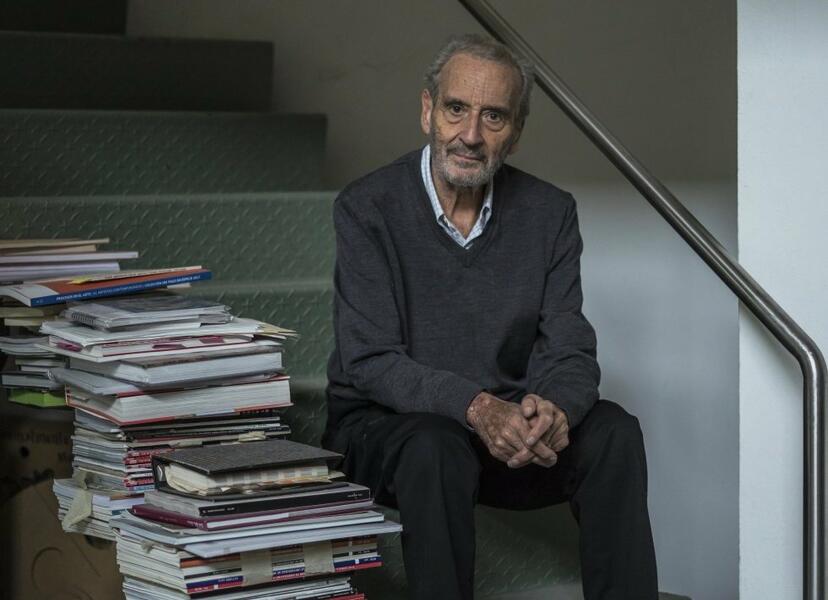IN MEMORIAM. VICENTE ROJO
Artist, editor and prominent designer, Vicente Rojo died in Mexico City at the age of 89.

Born in Spain, Vicente Rojo is considered one of the main figures of abstractionism. He worked with sculpture, drawing, engraving, graphic illustration - where he excelled, and painting.
His painting is grouped into five main series: Signs, in which he works with basic geometric shapes; Negations, arising from his intention that each painting deny the previous one and the one that would follow; Memories, born of his attempt to abandon a difficult childhood; México in the rain, conceived one day when he saw it rain in Tonantzintla, and Escenarios, composed of miniseries and which is a review of his previous songs and a sum of them. Starting in 1980, he began to alternate painting with sculpture, in an attempt to enrich his work, in the center of which he encouraged the intention to reflect, "as in a game of mirrors, two solitudes, that of the creator and that of the possible spectator" .
-
Cortesía del Diario El País
-
Vicente Rojo, La tinta negra y roja 10, 2008
-
De la muestra Escrito/Pintado en el MUAC, 2015.
-
Vicente Rojo, Sin título, 1972
-
Vicente Rojo, Maqueta “El payaso”, de la serie Circo dormido,1994. Foto—Photo: Vicente Rojo Cama
-
Obra "País de volcanes" de Vicente Rojo, instalada en la Secretaría de Relaciones Exteriores en Ciudad de México. Foto: JEFF GREENBERG/GETTY IMAGES
Illustrator of the 1st edition of One Hundred Years of Solitude, Rojo belonged to the group of artists called rupture (with Manuel Felguérez, Fernando García Ponce and Lilia Carrillo) although he considered that it was more about continuity; renovating form and color, he made variants of the same theme and made all his work the same as well as different.
As editor he contributed to the quality of the Mexican publishing industry and created with his disciples the most original generation of designers. "Vicente distinguished himself from the rest of the gang by a monastic austerity, by the few forceful words from him, by a rare nonconformity that did not have peace," said Gabriel García Márquez. “It was not easy to relate the complexity of him to the geometric purity of his paintings, where sky blue, invisible whites, and yellow rolled in spaces so polished that even the paper on which they were painted seemed to be metal, predominated. That is to say: both the painter in his life, and his paintings in his, seemed tamed by a modesty that insisted on exploding and could not find where"
-
Cortesía del Diario El País
-
Vicente Rojo & Octavio Paz, Discos visuales, 1968
-
Vicente Rojo & José-Miguel Ullán, Acorde, 1979-1982
-
Vicente Rojo, (diseño gráfico), Artes de México, núm 1, 1953
-
(izq.) Vicente Rojo, (diseño gráfico), Samuel Beckett, Cómo es, México, Serie del Volador, Joaquín Mortíz, 1966. (der) Vicente Rojo, (diseño gráfico), César Fernández Moreno, Introducción a la poesía, Colección Popular, México, FCE, 1962.
With respect to his Latin American environment, Rojo commented in an interview with EL PAÍS that in Mexico he found “a beautiful, bright, clear light and a free environment”, “I knew that this was going to be my country since I set foot,” he added.




